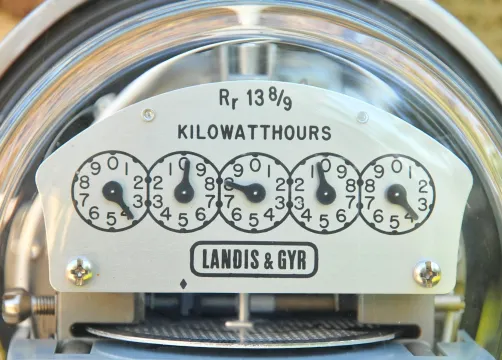Active banners: 0 Visible banners: 0
Watt's Your Appliance Energy Usage?
Provided by: Wisconsin Center for Environmental Education |Published on: February 22, 2024
Lesson Plans
4-810-12
Synopsis
- In this lesson plan, students will explore the difference between electrical power and energy as they relate to common household appliances.
- Students will learn the average wattages of appliances, the definition of kilowatt hour, and how to reduce the energy consumption in their homes and schools.

Subjects: Earth and Space Sciences
Authors: Wisconsin's K-12 Energy Education Program
Region: North America, USA - Midwest, United States, Global, Wisconsin
Languages: English
Teaching Materials
Positives
- This comprehensive lesson plan includes learning targets, a supply list, a vocabulary list, discussion questions, and extension activities.
- Since the activity involves whole-class participation, it is a positive way to foster camaraderie.
Additional Prerequisites
- It will be helpful, but not required, for teachers to have access to a color printer, a laminator, and a watt meter.
- Since many discussion questions are multiple-choice, teachers must print them separately or provide another visual aid with possible answers displayed.
- The resource mentions another lesson plan and a kit for checkout, but these resources do not have links to access them. You can find the lesson here and more information about the kit here.
- It may benefit students to understand where our energy comes from and how it impacts the environment.
Differentiation
- English teachers can have students answer the extension question regarding ways to conserve energy as an academic paragraph or a personal narrative.
- Math teachers can have students answer the extension question regarding calculating energy usage for one appliance in one week, month, and year. Students can participate in a small-group activity with different groups calculating for various appliances.
- After completing the lesson, students can create infographics to inform people how to reduce their energy consumption.
- This lesson can fit within a larger unit discussing how to reduce emissions within homes, covering topics like efficient heating and food waste.
- This activity is part of KEEP's Building Energy Detectives lessons where students explore the phenomenon, "What energy actions can I take at school, at home, and in my community to create a more sustainable future." During this 6-lesson series, students use energy audit tools (available in KEEP's Energy Audit Kit) to participate in classroom and school energy audits. Students examine energy actions they can take to reduce energy consumption, costs and their carbon footprint.
Scientist Notes
Teaching Tips
Standards
Resource Type and Format
All resources can be used for your educational purposes with proper attribution to the content provider.



